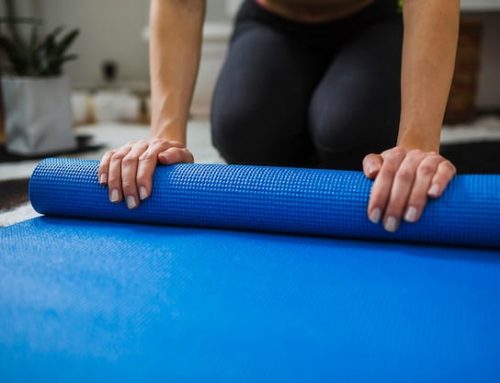Introduction
Foam rolling is a popular form of self-myofascial release that has taken the fitness world by storm. This technique involves using a foam roller to apply pressure to different parts of the body, helping to alleviate muscle tightness and soreness. While foam rolling is generally considered safe, there are some potential side effects that you should be aware of. In this article, we’ll take a closer look at what foam rolling is, how it works, and what the side effects of foam roller are.
What is Foam Rolling?
Foam rolling is a form of self-massage that involves using a foam roller to apply pressure to different parts of the body. The foam roller is a cylindrical tool made of dense foam, and it can be used to apply pressure to areas of the body that are tense or sore. Foam rolling is designed to help release tension in the muscles, improve flexibility, and reduce soreness after exercise.
How Does Foam Rolling Work?
When you use a foam roller, you apply pressure to the muscles, which can help to break up adhesions and scar tissue that can form as a result of exercise or injury. This pressure also helps to increase blood flow to the muscles, which can help to reduce inflammation and promote healing. Additionally, foam rolling can help to stimulate the nervous system, which can help to reduce pain and improve mobility.
What are the Side Effects of Foam Rolling?
While foam rolling is generally considered safe, there are some potential side effects that you should be aware of. Some of these side effects include:
- Pain: Foam rolling can be uncomfortable, especially when you’re first starting out. If you’re new to foam rolling, it’s a good idea to start with a softer foam roller and gradually work your way up to a firmer one. Additionally, it’s important to avoid rolling over joints or bony areas, as this can cause pain or injury.
- Bruising: Foam rolling can cause bruising in some people, especially if you’re applying too much pressure or rolling too aggressively. If you notice bruising after foam rolling, it’s a good idea to reduce your pressure and intensity.
- Muscle Soreness: While foam rolling can help to alleviate muscle soreness, it can also cause soreness in some people. This is especially true if you’re new to foam rolling or if you’re using a foam roller that’s too firm. If you experience muscle soreness after foam rolling, it’s a good idea to reduce your intensity and frequency until your muscles adapt.
- Increased Sensitivity: Foam rolling can increase the sensitivity of the skin and muscles. This is because it stimulates the nervous system, which can cause temporary discomfort or sensitivity. If you experience increased sensitivity after foam rolling, it’s a good idea to reduce your intensity and frequency until your body adapts.
How to Avoid Side Effects
If you want to avoid the side effects of foam rolling, there are a few things you can do. First, it’s important to start with a foam roller that’s appropriate for your level of experience. If you’re new to foam rolling, start with a softer foam roller and gradually work your way up to a firmer one. Additionally, it’s important to avoid rolling over joints or bony areas, as this can cause pain or injury.
Second, it’s important to use proper technique when foam rolling. This means rolling slowly and evenly over the muscles, avoiding any sharp or jerky movements. It’s also a good idea to avoid rolling over the same area for too long, as this can cause bruising or muscle soreness.
Finally, it’s important to listen to your body when foam rolling. If you experience any pain or discomfort, it’s important to stop immediately and consult with a healthcare provider. Additionally, if you experience any persistent or severe side effects, it’s a good idea to seek medical attention.
Conclusion
Foam rolling is a popular form of self-myofascial release that can help to alleviate muscle tightness and soreness. While foam rolling is generally considered safe, there are some potential side effects that you should be aware of. If you want to avoid the side effects of foam rolling, it’s important to start with a foam roller that’s appropriate for your level of experience, use proper technique, and listen to your body. As with any form of exercise or self-massage, it’s important to consult with a healthcare provider before starting a new foam rolling routine.






